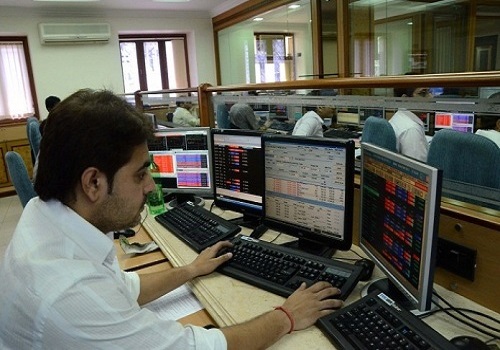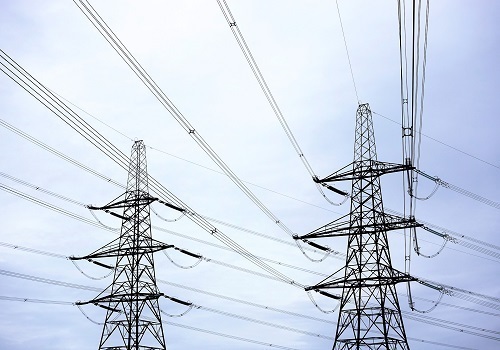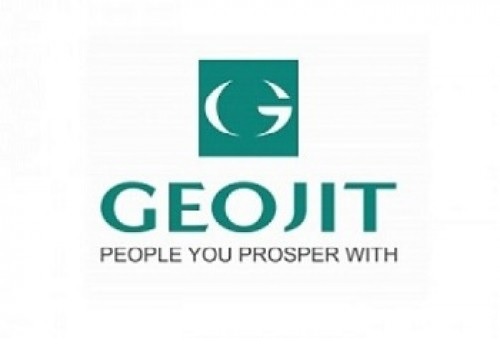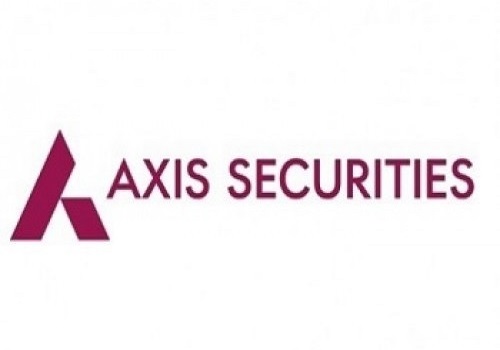Gold trading range for the day is 61620-62440 - Kedia Advisory

Follow us Now on Telegram ! Get daily 10 - 12 important updates on Business, Finance and Investment. Join our Telegram Channel
Gold:
Gold prices experienced a marginal increase of 0.03% yesterday, closing at 61985, fueled by persistent concerns over the potential escalation of military actions in the Middle East and uncertainties surrounding the global economic outlook. This geopolitical tension has acted as a support factor for gold, a traditional safe-haven asset. Additionally, a strong U.S. economy and resistance from central bank officials have prompted some investors to reconsider their expectations for the Federal Reserve's rate-cut timeline. Market sentiment, as reflected in the CME's FedWatch Tool, suggests that investors anticipate the U.S. central bank to maintain interest rates during its policy meeting on January 30-31. The Indian government's decision to raise the import duty on gold and silver findings, along with precious metal coins, to 15% from January 22, has impacted the domestic market. In contrast, gold demand has seen an uptick in China and Hong Kong ahead of Lunar New Year celebrations. From a technical standpoint, the market is currently experiencing short covering, with a 14.34% drop in open interest to settle at 5031. Gold is finding support at 61800, and a breach below this level could lead to a test of 61620. On the upside, resistance is expected at 62210, and a move beyond this level may see prices testing 62440. This technical overview suggests a delicate balance in the gold market, with key support and resistance levels influencing future price movements. Traders and investors should monitor these levels closely for potential signals of market direction.
Trading Ideas:
* Gold trading range for the day is 61620-62440.
* Gold gains as escalating geopolitical tensions in the Middle East offered some support.
* Traders might also refrain from placing aggressive directional bets ahead of this week's key US macro data.
* Markets expect the US central bank will keep interest rates unchanged at the end of its policy meeting on January 30-31
Silver:
Silver prices recorded a significant gain of 1.29% yesterday, closing at 71869, buoyed by a weakening dollar and a narrowing of treasury yields ahead of key economic data releases. The upcoming fourth-quarter US GDP and the PCE Index, the Federal Reserve's crucial inflation measure, are expected to provide further direction to the market. The S&P Global US Composite PMI for January 2024 surged to 52.3, indicating the most rapid rise in business activity since June 2023. Additionally, anticipation of monetary policy decisions from major central banks, including the European Central Bank (ECB) and the Bank of Japan (BoJ), contributed to market dynamics. The ECB's upcoming monetary policy decision and indications from the BoJ Governor suggesting a potential interest rate increase in April influenced traders' sentiments. From a technical perspective, the market is undergoing short covering, with a 13.68% drop in open interest to settle at 26303. Silver is currently finding support at 71095, and a breach below this level could lead to a test of 70315. On the upside, resistance is expected at 72410, and a move beyond this level may see prices testing 72945. Traders should closely monitor economic data releases, central bank decisions, and geopolitical developments, as they are likely to play pivotal roles in determining the silver market's trajectory in the near term. The positive momentum observed in silver prices is supported by a combination of factors, and investors will be closely watching upcoming economic indicators for further insights.
Trading Ideas:
* Silver trading range for the day is 70315-72945.
* Silver gained as the dollar fell and treasury yields narrowed ahead of key economic data
* S&P Global US Composite PMI surged to 52.3 in January 2024, indicating rapid rise in business activity
* Service sector activity expanded the most in seven months
Crude oil:
Crude oil prices rose by 1.21%, settling at 6253, influenced by a Chinese economic stimulus package and geopolitical tensions. The Chinese central bank's announcement to cut the reserve requirement ratio from February 5, as part of efforts to bolster the fragile economic recovery, contributed to the upward movement in oil prices. Additionally, a decline of 6.67 million barrels in U.S. crude stocks, reported by the American Petroleum Institute for the week ended January 19, added support to the market. However, concerns over tepid demand and an increase of 7.2 million barrels in gasoline inventories tempered the positive sentiment. The stronger dollar also posed a challenge to oil prices. The International Energy Agency (IEA) revised its 2024 oil demand growth forecast upward, projecting a rise of 1.24 million barrels per day. While this marks the third consecutive upward revision, it remains significantly lower than OPEC's projection of 2.25 million bpd. The IEA attributed the revision to improving global economic growth, lower crude prices in the fourth quarter, and China's expanding petrochemicals sector. Technically, the market is under fresh buying, with an increase in open interest by 0.62% to settle at 11216. Crude oil is finding support at 6172, with a potential test of 6090, while resistance is likely at 6324. A move above could lead to testing 6394. Traders should monitor global economic developments, inventory data, and geopolitical factors for a comprehensive understanding of market dynamics.
Trading Ideas:
* Crudeoil trading range for the day is 6090-6394.
* Crude oil rose due to a Chinese economic stimulus package and geopolitical tensions.
* China's central bank announced a cut in the amount of cash that banks must hold as reserves.
* US crude stocks fell, but gasoline inventories increased, raising concerns about fuel demand.
Natural gas:
Natural gas prices surged by 4.38%, settling at 185.8, driven by forecasts predicting cooler weather and increased heating demand over the next two weeks. The market reacted to expectations of prolonged cold weather, which would boost heating requirements, coupled with slower-than-expected recovery in output following disruptions caused by the recent Arctic freeze. Despite forecasts indicating warmer-than-normal weather through early February, the recent extreme cold weather led to a record-high daily gas demand, impacting both gas output and liquefied natural gas (LNG) feedgas. The average gas output in the Lower 48 states declined to 102.9 billion cubic feet per day (bcfd) in January, down from the monthly record of 108.0 bcfd in December. Although daily U.S. gas output was expected to increase to a preliminary one-week high of 103.7 bcfd, it falls short of compensating for the 17.2 bcfd drop observed from January 8-16. Meteorologists project that temperatures in the Lower 48 states will remain warmer than normal until at least February 8. Despite this, the market remains under short covering, with a decrease in open interest by -5.09% to settle at 46265. Prices have increased by 7.8 rupees. Natural gas is finding support at 180.9, with a potential test of 176.1, while resistance is likely at 189.6. A move above could lead to testing 193.5. Traders should closely monitor weather forecasts, production data, and market dynamics for well-informed decision-making.
Trading Ideas:
* Naturalgas trading range for the day is 176.1-193.5.
* Natural gas gains due to forecasts of cooler weather and higher heating demand.
* Output of natural gas remains slow to return after equipment froze during the recent Arctic freeze.
* Gas output in the Lower 48 states has fallen in January compared to December's record high.
Copper:
Copper prices rose by 1.05%, settling at 729.9, driven by a slight pullback in the US dollar and bolstered by fresh stimulus measures from the Chinese government. China's announcement of a reserve requirement ratio cut in the next two weeks, providing CNY 1 trillion in liquidity, and indications of additional economic support contributed to positive sentiment. These measures, along with a pledge of CNY 2 trillion in foreign funds for an equity rescue package, aimed to address weakening demand and enhance confidence in the Chinese manufacturing outlook. Concerns about long-term copper supply failing to keep pace with its crucial role in electrification further supported prices. The global refined copper market reported a deficit of 119,000 metric tons in November, compared to a deficit of 48,000 metric tons in October, according to the International Copper Study Group (ICSG). November's refined copper output was 2.26 million metric tons, with consumption reaching 2.38 million metric tons. Adjusted for changes in inventory in Chinese bonded warehouses, there was a deficit of 128,000 metric tons in November, contrasting with a 70,000 metric tons deficit in October. Technically, the market is experiencing fresh buying, with open interest rising by 8.71% to settle at 4618. Prices have increased by 7.55 rupees. Support is identified at 724.4, with a potential test of 718.7, while resistance is likely at 733.8. A move above could lead to testing 737.5. Traders are advised to closely monitor developments in China, global economic conditions, and copper supply dynamics for informed decision-making in the market.
Trading Ideas:
* Copper trading range for the day is 718.7-737.5.
* Copper jumped amid support from fresh stimulus measures by the Chinese government.
* China signaled it will cut its reserve requirement ratio in the coming two weeks.
* Copper market in 119,000 metric tons deficit in Nov 2023 – ICSG
Zinc:
Zinc prices surged by 1.72%, settling at 228.1, driven by reinforced expectations of additional stimulus measures from China, the top metals consumer. China's central bank governor announced a 50-basis-point reduction in the reserve requirement for banks, effective from February 5, in response to economic challenges. Additionally, the central bank will reduce re-lending and re-discount interest rates by 25 basis points for the rural sector and small firms starting January 25. The global zinc market deficit expanded to 71,600 metric tons in November 2023, compared to a deficit of 62,500 tons in October, as reported by the International Lead and Zinc Study Group (ILZSG). For the first 11 months of 2023, there was an overall surplus of 211,000 tons, contrasting with a deficit of 86,000 tons during the same period in 2022. China's refined zinc output in December 2023 was 590,900 mt, indicating a month-on-month increase of 2.05% and a year-on-year rise of 12.38%. The cumulative output for refined zinc from January to December reached 6.622 million mt, marking a year-on-year growth of 10.77%. Additionally, domestic zinc alloy production in December amounted to 102,900 mt, up by 9,600 mt from the previous month. Technically, the market is experiencing fresh buying, with a notable increase in open interest by 18.75% to settle at 3299. Prices have risen by 3.85 rupees. Support is identified at 226, with a potential test of 223.7, while resistance is likely at 229.5, and a move above could lead to testing 230.7.
Trading Ideas:
* Zinc trading range for the day is 223.7-230.7.
* Zinc rose on reinforced hopes of more stimulus measures from China
* China will cut banks' reserve requirement ratio from Feb 5
* The global zinc market deficit increased to 71,600 metric tons in November 2023 from a deficit of 62,500 tons in October
Aluminium:
Aluminium prices showed a marginal increase of 0.02%, settling at 203.15, as traders remained watchful of potential European Union import sanctions on major producer Russia, prompted by Moscow's invasion of Ukraine. Calls from Poland and the Baltic states for the EU to ban Russian aluminium imports added to market concerns. In December, the share of available aluminium stocks of Russian origin in LME-registered warehouses was high at 90.4%. Chinese authorities are contemplating measures to stabilize the slumping stock market, with plans to mobilize about 2 trillion yuan. The country's cabinet pledged to take effective measures to boost market confidence, including injecting medium- and long-term funds into the capital market. Global primary aluminium output in December increased by 2.1% YoY to 6.041 million tonnes, according to data from the IAI. China's imports of aluminium surged by 28% in 2023, reaching 3.06 million metric tons, driven by robust demand and higher prices in the world's largest consumer market for the metal. China's primary aluminium consumption was forecasted to grow by 3.9% in the same period to 42.5 million tons, China's imports of primary aluminium from Russia saw a significant rise, reaching 1.06 million tons in the first 11 months of 2023, marking a substantial 178.3% increase from the previous year. Technically, the market is witnessing fresh buying, with a 24.28% increase in open interest to settle at 3946, and prices up by 0.05 rupees. Support is identified at 202.1, with a potential test of 200.9, while resistance is now likely at 205.2, and a move above could lead to testing 207.1.
Trading Ideas:
* Aluminium trading range for the day is 200.9-207.1.
* Aluminium gains as traders continued to gauge risks of potential European Union import sanctions on Russia
* Global primary aluminium output in December increased by 2.1% compared to the previous year.
* China's imports of aluminium rose by 28% in 2023, driven by strong demand and higher prices.
Cottoncandy:
Cottoncandy prices exhibited a modest recovery, closing up by 0.45% at 57500, following a recent drop attributed to a forecasted decrease in world consumption for the 2023/24 season. The reduction in consumption is primarily driven by lower estimates for India, Indonesia, Pakistan, Uzbekistan, and Turkey. Additionally, world ending stocks for 2023/24 are projected to be 2.0 million bales higher due to increased beginning stocks, production, and lower consumption. The Cotton Association of India (CAI) maintained its estimates for domestic cotton consumption in the 2023-24 season at 311 lakh bales. However, it retained pressing estimates at 294.10 lakh bales, emphasizing stability in the cotton supply till the end of the season. Despite Brazil achieving a historic high in cotton production in the 2022-23 season, global cotton prices experienced pressure due to sluggish demand under unfavorable economic conditions. Reports indicate a decline in pink bollworm infestation in Indian cotton crops, falling from 30.62% in 2017-18 to 10.80% in 2022-23. However, the infestation remains present in cotton-growing areas across the country. In the global market, Brazilian cotton shipments increased by 12% in November compared to October but witnessed a 5.5% decline year-on-year. The International Cotton Advisory Committee (ICAC) projects that global cotton production will surpass consumption for the second consecutive year. Technically, the market is experiencing fresh buying, with a substantial 51.72% increase in open interest, settling at 176, while prices rose by 260 rupees. Support is identified at 57020, with a potential test of 56550. Resistance is likely at 57780, and a move above could push prices towards 58070.
Trading Ideas:
* Cottoncandy trading range for the day is 56550-58070
* Cotton gains on low level recovery after prices dropped as world consumption forecast lower
* World 2023/24 ending stocks are forecast 2.0 million bales higher this month driven by higher beginning stocks.
* World production is 260,000 bales higher with China’s crop up 500,000 bales and Argentina’s production higher as well
* In Rajkot, a major spot market, the price ended at 26620.1 Rupees dropped by -0.12 percent.
Turmeric:
Turmeric prices recorded a gain of 1.35%, settling at 15808, driven by weaker production prospects, tighter stocks, and improved export opportunities. However, the upside is limited as buying activities have been slow in anticipation of stock releases ahead of the new crops in January 2024. Pressure on prices is also observed due to favorable weather conditions leading to improved crop conditions. The announcement of PM Modi's Turmeric Board in Telangana has sparked concerns among farmers in Maharashtra over the headquarters location. Despite this, the crop condition is reported as satisfactory, with the harvest expected to be ready from January to March. Current levels of buying activity and decreasing supplies are anticipated to sustain price stability. Expectations of a 20–25% decline in turmeric seeding, particularly in regions like Maharashtra, Tamil Nadu, Andhra Pradesh, and Telangana, contribute to shifting priorities among farmers. Turmeric exports in November 2023, around 8,582.44 tonnes of turmeric were exported, showing a 15.34% decline from October and a 30.78% drop from November 2022 while Turmeric imports in November 2023, around 1,305.24 tonnes of turmeric were imported, showing a 48.82% decline from October and a 12.99% drop from November 2022. Technically, the market is undergoing short covering, with a 2.21% decrease in open interest to settle at 13,305, while prices increased by 210 rupees. Support is identified at 15570, with a potential test of 15330. Resistance is now likely at 16110, and a move above could lead to testing 16410.
Trading Ideas:
* Turmeric trading range for the day is 15330-16410.
* Turmeric gains amid weaker production prospects and tighter stocks in the market.
* While Support is also evident for improved export opportunities.
* However, upside seen limited as buying activities has been slower in expectation new crops.
* In Nizamabad, a major spot market, the price ended at 13755.5 Rupees gained by 1.26 percent.
Jeera:
Jeera prices rebounded with a significant gain of 4.02%, settling at 28350, driven by low-level buying after a recent drop attributed to higher production prospects in key cultivating states of Gujarat and Rajasthan. Acreage for jeera in the current rabi season reached a four-year high, showcasing a strong correlation between market prices and cultivation area. Farmers expanded jeera cultivation in Gujarat and Rajasthan, with a substantial 160% increase in acreage in Gujarat and a 25% increase in Rajasthan. Global demand for Indian jeera declined as buyers preferred other origins like Syria and Turkey due to higher prices in India. The export market is expected to remain subdued in the upcoming months, influenced by seasonal patterns and challenges such as lower water availability, fewer cold days, and concerns about fusarium wilt attacks on crops. Despite India's expectation of a potentially bumper crop, other major jeera-producing countries like China, Egypt, and Syria anticipate higher yields, impacting the global market. Jeera exports during Apr-Nov 2023 dropped by 33.10% at 84,467.16 tonnes compared to the same period in 2022. In November 2023, around 8,099.26 tonnes of jeera were exported, showing a rise of 30.04% from October but a decline of 22.89% from November 2022. Technically, the market is experiencing fresh buying, with a 1.28% increase in open interest to settle at 1896, while prices rose by 1095 rupees. Support is identified at 27530, with a potential test of 26690, and resistance is now likely at 28980, with a move above potentially leading to testing 29590.
Trading Ideas:
* Jeera trading range for the day is 26690-29590.
* Jeera gained on low level buying after prices dropped due to higher production prospects
* In Gujarat, Cumin sowing witnessed very strong growth by nearly 103% with 530,030.00 hectares against sown area of 2022
* Stockists are showing interest in buying on recent downfall in prices triggering short covering.
* In Unjha, a major spot market, the price ended at 31897.55 Rupees gained by 0.65 percent.
Views express by all participants are for information & academic purpose only. Kindly read disclaimer before referring below views. Click Here For Disclaimer












 320-x-100_uti_gold.jpg" alt="Advertisement">
320-x-100_uti_gold.jpg" alt="Advertisement">











